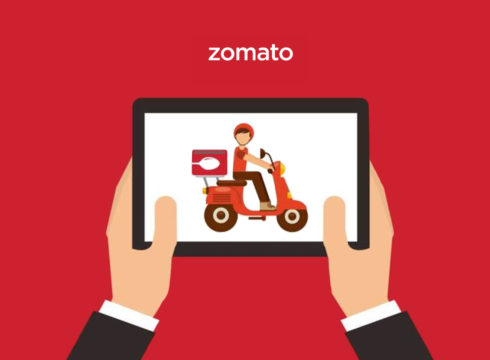Zomato began life as FoodieBay, which was an online restaurant directory
Besides discovery and food delivery, it has entered segments such as live events, restaurant reservation, loyalty programmes
With over $1.28 Bn raised from multiple investors, how does Zomato make money?
Inc42 Daily Brief
Stay Ahead With Daily News & Analysis on India’s Tech & Startup Economy
As one of the premier attractions of the Indian startup ecosystem, Zomato is well known throughout the country and has also ventured into many international markets over the years.
The foodtech unicorn was founded by Deepinder Goyal and Pankaj Chaddah, when the former was working at Bain and Company and found it troublesome to find the right restaurant menus at meal times. Ever enterprising, Goyal started clicking photos of the menu and sharing it with his colleagues to make ordering easier. Not only did this simply lunch-ordering, but opened up a whole new business for Goyal. processing of ordering in.
Chaddah came on board to help Goyal launch Foodiebay in 2008, which let users check restaurant menus and review the properties. Today, more than a decade later, the company has added components to its business such as online food ordering, restaurant reservations and loyalty programmes, enablement for restaurants, consultancy services and a lot more.
Over the years, Zomato has been through many highs and lows and has kept up with rival Swiggy in the online food ordering segment. From raising funds from major investors to the exit of Chaddah, Zomato has stayed in the public eye even as business boomed and funding kept coming in.
The company has strengthened its presence in Tier 2/3/4 markets over the past year with its expansion, but at the same time it is embroiled in a long-standing battle with restaurants to change its discount-happy ways. Whether this has a deep impact on Zomato’s overall business is yet to be seen, but the fact is Zomato has opened up many more channels for revenue through its business model diversification.
- Restaurant Listings / Advertising
- Food Delivery
- Subscription Programmes
- Live Events
- White Label Access
- Zomato Kitchens
So how does Zomato earn its money and what is the company’s business model? Simply put, Zomato has avoided putting all its eggs in one basket and has divided its resources among many parts of the business.
A Breakdown Of Zomato Business Model
Today, Zomato has multiple revenue channels besides online ordering, which most consumers would be familiar with.
Restaurant Listings / Advertising
In its first avatar, Zomato was just a listing platform and a restaurant directory. This brought in advertising revenues from restaurants who joined the platform. Extending this further after the launch of food delivery and restaurant reservations, Zomato now charges commissions from restaurants to be placed prominently on the feed. Restaurants can pay to have their events or offers promoted as well as their overall banner, which brings improved visibility and conversions from Zomato users.
Food Delivery
To begin with, through its food delivery business, Zomato charges a commission to the restaurants on the basis of orders. While users pay a delivery fee, Zomato earns through restaurants who pay a commission for each delivery, which is then split among the delivery partner and the company. Commissions from restaurants vary based on whether Zomato is fulfilling the delivery or whether the restaurant uses its own riders. This is said to contribute in a small way to the company’s total income due to huge competition and need for deep discounts etc.
Subscription Programmes
With Zomato Gold for consumers and users, and subscription solutions for restaurants, Zomato opened up a steady stream of revenue. While users pay a subscription fee to access the Zomato Gold loyalty programme which brings exclusive offers, restaurants also pay a monthly fee to be part of Zomato’s bouquet of offers. Restaurants also pay Zomato a monthly fee for miscellaneous services such as live tracking, Zomato-branded tamper-proof packaging and more.
Live Events
With Zomaland, Zomato entered the branded live events market last year. Zomato charges users an entry fee to attend Zomaland, where besides food, they can witness live musical performances and other acts. In 2018, it had organised the entertainment carnival in Delhi, Pune, and Bengaluru, where Zomato claimed over 100K people showed up. This year, Zomaland is going to Pune, Delhi, Bangalore, Hyderabad, Mumbai, Jaipur, Pune, Chandigarh, and Kolkata.
White Label Access
Zomato also enables services such as Zomato Whitelabel under which they give offers to the restaurants to develop a customized food delivery app. It also works with cloud kitchens and restaurants for consultancy services. Zomato works with select restaurant operators to help in identifying locations for expansions at a minimal fixed cost, but with increased options for the user. It provides the requisite licenses and operational enablement for such restaurant partners.
Zomato Kitchens
In order to be able to provide kitchen infrastructure services to select restaurant operators, Zomato works with entrepreneurs to set up and operate Zomato Kitchens under different labels. This helps entrepreneurs fund restaurants in the right location with an investment of INR 35 Lakh and more. Zomato claims it offers returns in the range of INR 2 Lakh to INR 4 Lakh per month to the investors, with 180+ affiliate kitchens already up and running.
As it has grown in size and scale, Zomato has tried to reduce the reliance on cash-burn reliant models and streamlined to enter enablement and other user-generated streams of revenue. Zomato’s cash burn is mostly in retaining users against its rival Swiggy. However, being in the line of fire for deep discounting practices, Zomato may soon be able to earn from other parts of its business model.
Note: We at Inc42 take our ethics very seriously. More information about it can be found here.


